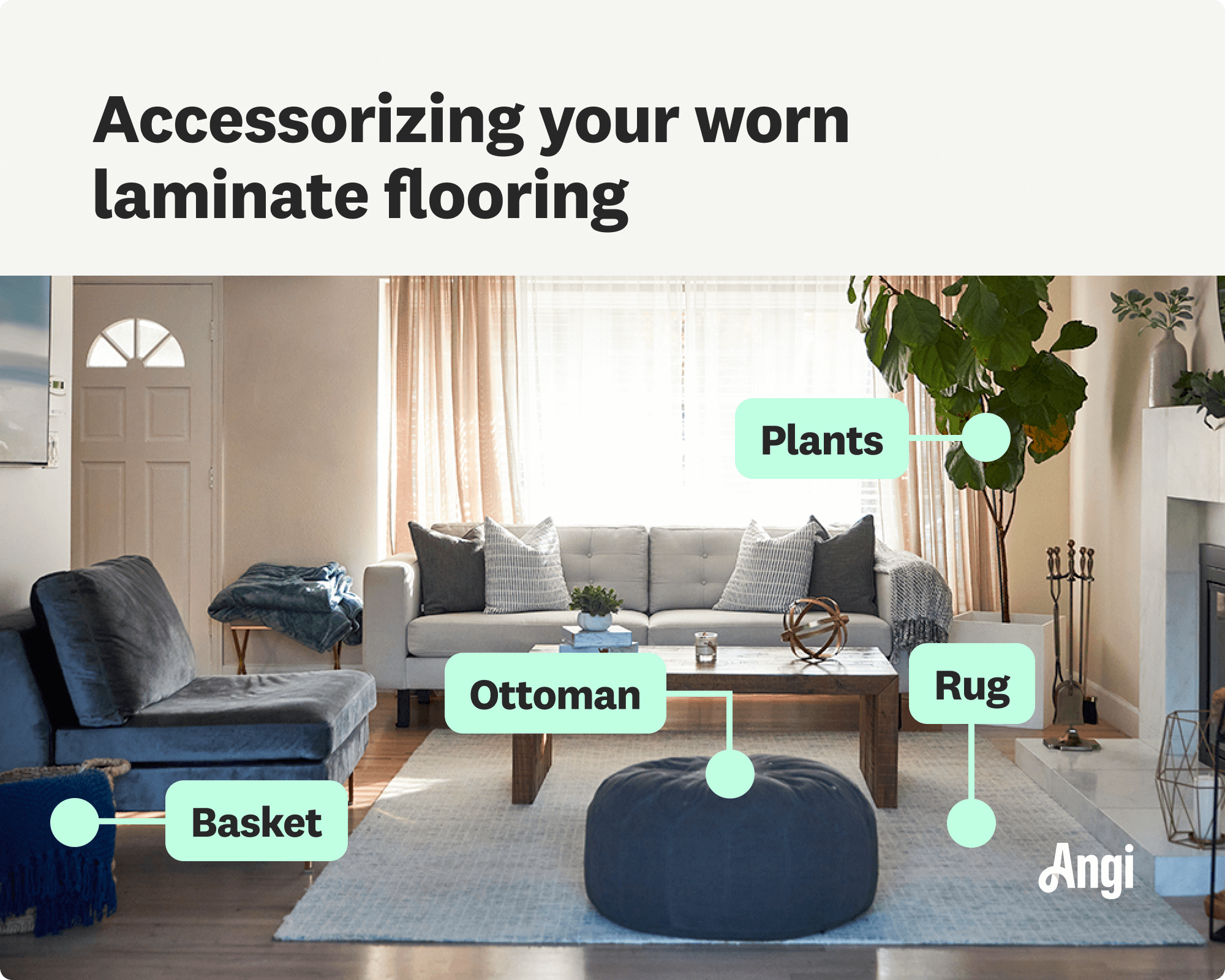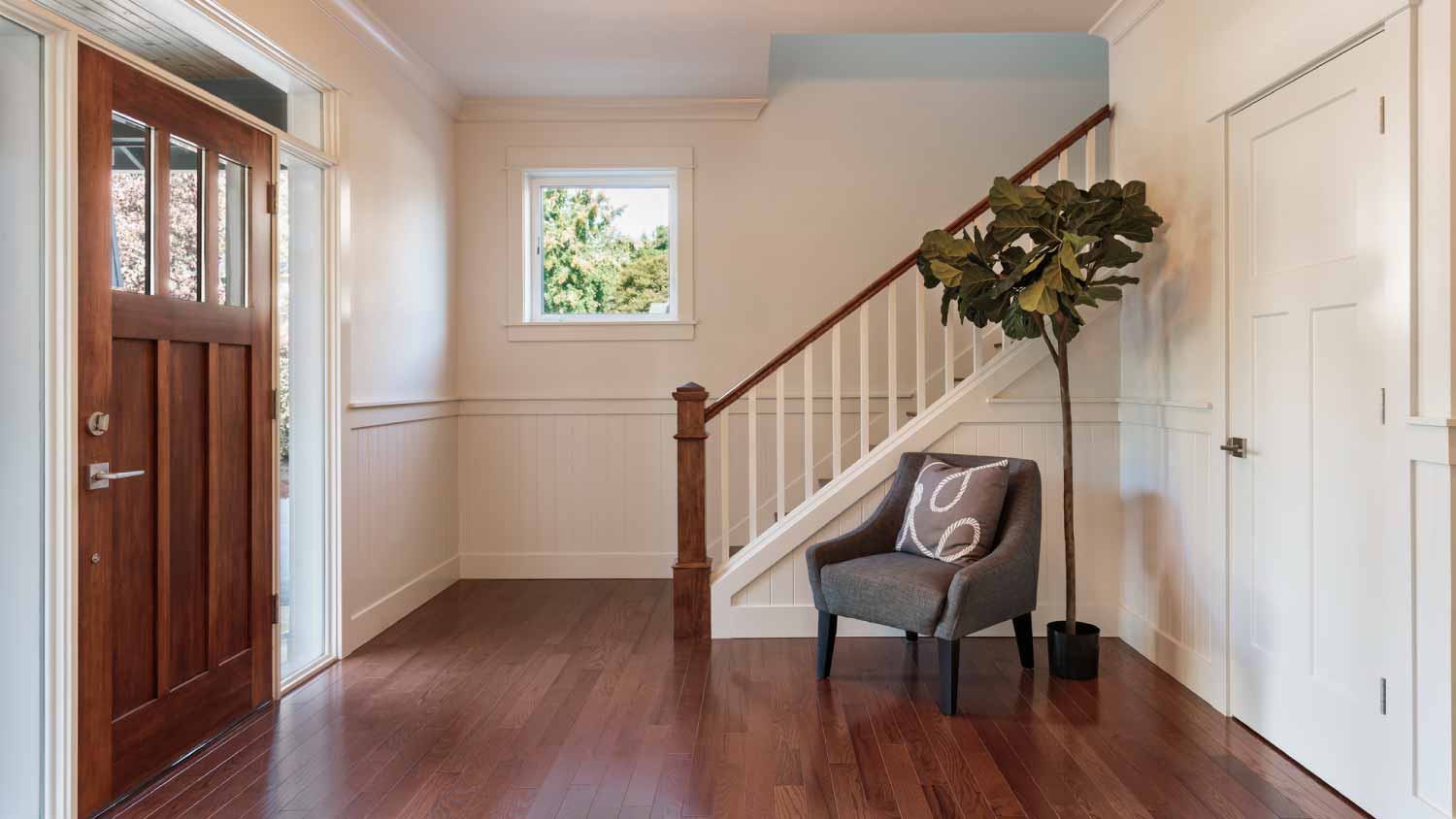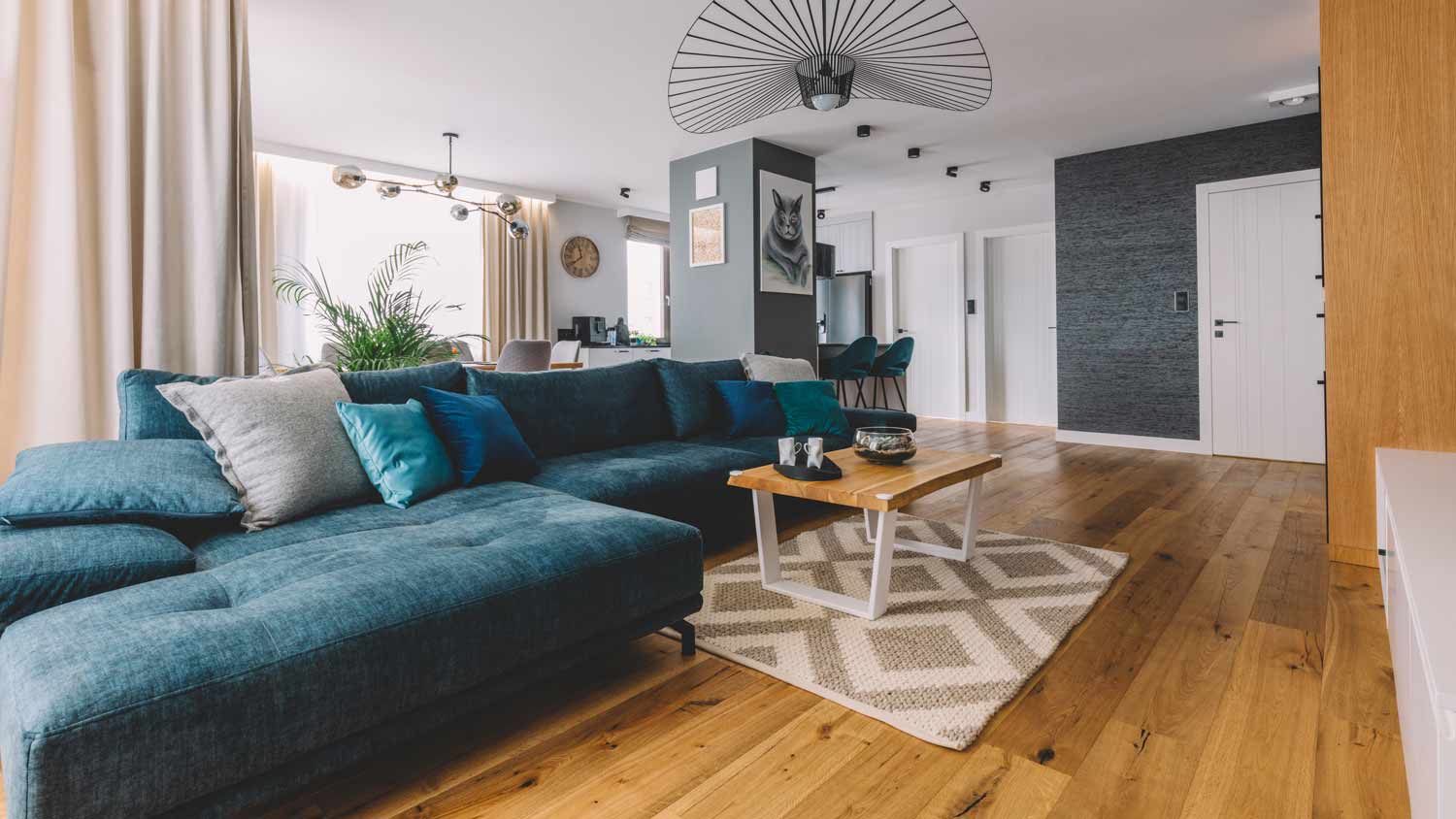Can You Paint Laminate Flooring for a Home Upgrade? Don’t Start Until You Read This
To paint or not to paint?


Most experts advise against painting laminate flooring, as painted laminate peels and chips very easily.
Giving the floor a good cleaning, adding rugs, refinishing the floor, or replacing it altogether can help you achieve the look you want without painting laminate.
If you choose to replace your laminate flooring, you’ll pay $3 to $13 per square foot.
If your laminate floors have seen better days, you may be dreaming of an upgrade. But what should that upgrade look like? Many people envision painted laminate flooring to match their unique aesthetic. But can you actually paint laminate? Should you? Technically, nothing is stopping you from painting your floors, but painting laminate flooring comes with a special set of considerations. Most experts will tell you that it’s not the best option, but if you want to try it to save on laminate flooring repair costs, here’s what you should know.
Pros and Cons of Painting Laminate Flooring
Even though most experts will tell you not to paint your laminate floors, there are still some benefits (albeit short-term) of doing so.
| Pros | Cons |
|---|---|
| Can create a fresh look | Makes the floor all one color, removing the wood look |
| Allows you to customize the color | The lines where the boards meet will still be visible |
| Doesn’t take much time | The paint will peel or chip |
Sure, painting laminate is pretty quick and lets you color-match to your existing decor. However, it can be difficult to paint laminate properly. If you sand laminate flooring too much, you’ll scrub off the image layer that has the attractive wood grain, leaving you with just the wood core showing through. You need a very light touch with a sander to get the paint to stick without going too deep. Most DIYers don’t have this touch.
There are other downsides to painting laminate. For instance, one of the appealing features of laminate flooring is its ability to mimic the look of real wood. When you paint laminate floors, they lose the look of wood and become all one color. Additionally, because the finish on laminate flooring is a wear layer (a shiny coat that protects the image layer), it may be difficult for paint to stick. As a result, the paint will eventually chip or peel off the floor—definitely not the look you were dreaming of.
Alternatives to Painting Laminate Floors
If your floors need an upgrade and you don’t want to risk sanding or painting, consider these alternatives to painting your laminate floors.
Refinish the Floors
Refinishing allows you to retain the wood look of laminate floors while still giving them a fresh appearance. To refinish laminate floors, you’ll need to vacuum or sweep them thoroughly to remove dust and debris and then clean them with a degreaser.
Unlike refinishing hardwood floors—which requires sanding the floors until the finish is gone and the surface is smooth—you’ll buff laminate floors until the shine is gone. Clean the area again to remove any dust, and then apply a laminate floor refinisher to small sections using a paintbrush or roller to spread it evenly on the floor. This can be a time- and labor-intensive DIY, so don’t hesitate to bring in a local laminate flooring pro to get it done.
Add Accessories

If your laminate flooring is dull, chipped, or scuffed, you can cover the areas with accessories like rugs, large vases, ottomans, and more. This is a good chance to get creative with your home decor and personalize your space.
Deep Clean the Floors
Laminate floors can become dull due to constant use and wear and tear. Giving them a thorough vacuuming and mopping can work wonders. You can purchase a laminate floor cleaner or DIY it by mixing a small amount of vinegar or unscented dish soap with warm water. Make sure to wring the mop out so that you don’t put too much water on the floor.
Replace the Flooring
If your laminate flooring is in a poor enough condition that you’re considering painting it, you may want to start thinking about replacing it. Laminate flooring installation costs $3 to $13 per square foot, with most people paying an average of $2,900 for a laminate floor replacement job. There truly is no substitute for brand-new laminate flooring.
How to Paint Laminate Flooring

If you decide to tackle painting your laminate floors, there are a few steps you should follow to get the best results. Keep in mind that this might not turn out as well as you hope, and be prepared for some serious chipping and peeling in the not-so-distant future.
Clean the floors: Clean your laminate floor thoroughly, first with a vacuum or broom and then with a laminate floor cleaner.
Repair cracks, holes, or gaps: Using laminate flooring putty, fill in any cracks, holes, or gaps, and then allow it to dry.
Lightly sand or buff: While you don’t want to sand all the way to the image layer, you do want to remove some of the shine from the floor.
Clean again: After you buff the floor, remove the residue with a cloth.
Prime the floors: Use a floor primer made for glossy surfaces and a roller attached to a long handle to prime the floor. Wait for it to dry.
Paint the floors: Contact the manufacturer or talk to a laminate flooring contractor to determine the right paint for the job. Using a long-handled roller brush, start in one corner of the room and paint the floor, working your way to the exit. Wait for the paint to dry. Then, add a second coat.
Seal the paint: For the best results and to make the floor as durable as possible, seal the paint with an appropriate sealer and wait for it to dry.
Bottom Line: Can You Paint Laminate Flooring?
Because painted laminate tends to chip and peel, painting laminate flooring isn’t the ideal route. You’re going to spend a lot of money on paint, primer, and a sander, and your floor will still won’t look as good in a few years as it would have if you spent the money refinishing it instead. You may even be better off putting your money toward new laminate flooring. You can always contact a laminate flooring installation pro for their expert opinion and to get an accurate estimate of what new laminate flooring or refinishing may cost.
Kassidy Barber contributed to this piece.

.jpg?impolicy=leadImage)



- How Long Does Laminate Flooring Last? What to Know Before Installing or Replacing Your Flooring
- How to Dispose of Laminate Flooring Quickly and Safely
- Everything You Need to Know About Laminate Flooring
- Top 15 Tips for Installing Laminate Flooring Like a Pro
- How to Acclimate Laminate Flooring for the Best Results
- How to Repair Laminate Flooring: A Complete DIY Guide
- Laminate Countertop Pros and Cons
- Laminate vs. Vinyl Flooring: Pros, Cons, Costs, and More
- What Are Laminate Countertops, and What Projects Do They Work Well For?
- Top 10 Tips to Caring For and Cleaning Laminate Flooring










